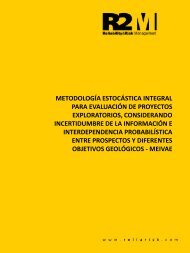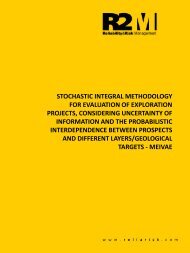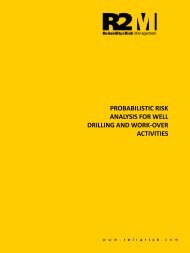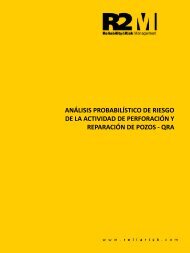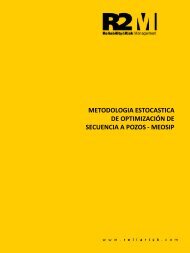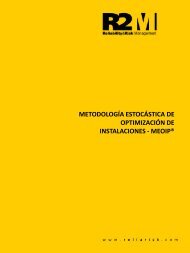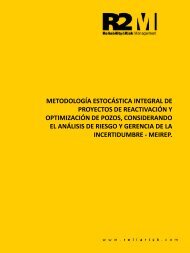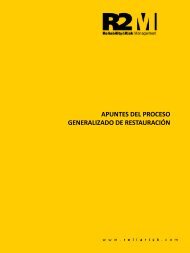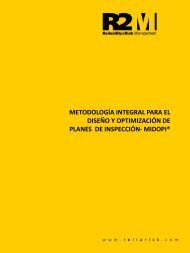Remaining Life of a Pipeline
You also want an ePaper? Increase the reach of your titles
YUMPU automatically turns print PDFs into web optimized ePapers that Google loves.
7. Conclusions<br />
<br />
The use <strong>of</strong> the physical model proposed by M. Ahammed must be limited for those uses in which<br />
the dominant corrosion mechanisms are corrosion erosion, pitting corrosion and uniform attack.<br />
The experience has shown that these are actually the failure mechanisms for most <strong>of</strong> the<br />
pipelines industrial applications. Nevertheless, for complex applications (nuclear plants or<br />
operating conditions with extremely high strength solicitude), other corrosion mechanisms such<br />
as intergranular corrosion, stress corrosion cracking and selective leaching must be considered;<br />
then, a more extensive analysis is required.<br />
<br />
The proposed statistical treatment <strong>of</strong> the physical model, accounts for the uncertainty due to the<br />
variability <strong>of</strong> the input parameters, but the uncertainty associated with the model by itself is not<br />
included in this study.<br />
There are several sources <strong>of</strong> “model uncertainty” because the final failure pressure model,<br />
proposed by M. Ahammed, was obtained by mixing the equation (ii), which comes from the<br />
classical fracture mechanism theory, with several empirical equations like: eq. (vii), (to establish<br />
the relationship between hoop strength and yield strength), eq. (ix), (to calculate the folias factor)<br />
and equations (xii) and (xiii), (to calculate the corrosion growth rate).<br />
The sensitivity analysis demonstrated that :<br />
• Among the seven parameters included in the physical model, only the variability on the<br />
values <strong>of</strong> the wall thickness “T”, radial corrosion growth rate “Rd” and defect depth “do”, has<br />
important effect on the dispersion <strong>of</strong> the values <strong>of</strong> the remaining strength “Pf”.<br />
• The contribution <strong>of</strong> wall thickness “T” and the defect depth “do” decreases with time, while the<br />
contribution <strong>of</strong> the radial corrosion growth rate “Rd”, increases (see fig. 8). This demonstrates<br />
that “Rd” is the most important parameter to take into account in the analysis <strong>of</strong> the remaining<br />
strength in a pipeline with corrosion defects.<br />
<br />
Being the radial corrosion growth rate “Rd” the most critical parameter, the linear model assumed<br />
to predict the corrosion growth becomes a critical factor, regarding this issue, the following<br />
considerations are important:<br />
• An extensive analysis <strong>of</strong> data, coming from different services in the oil industry, Appendix #1,<br />
shows that a more accurate exponential model (also empirically gotten) can be used to<br />
27






